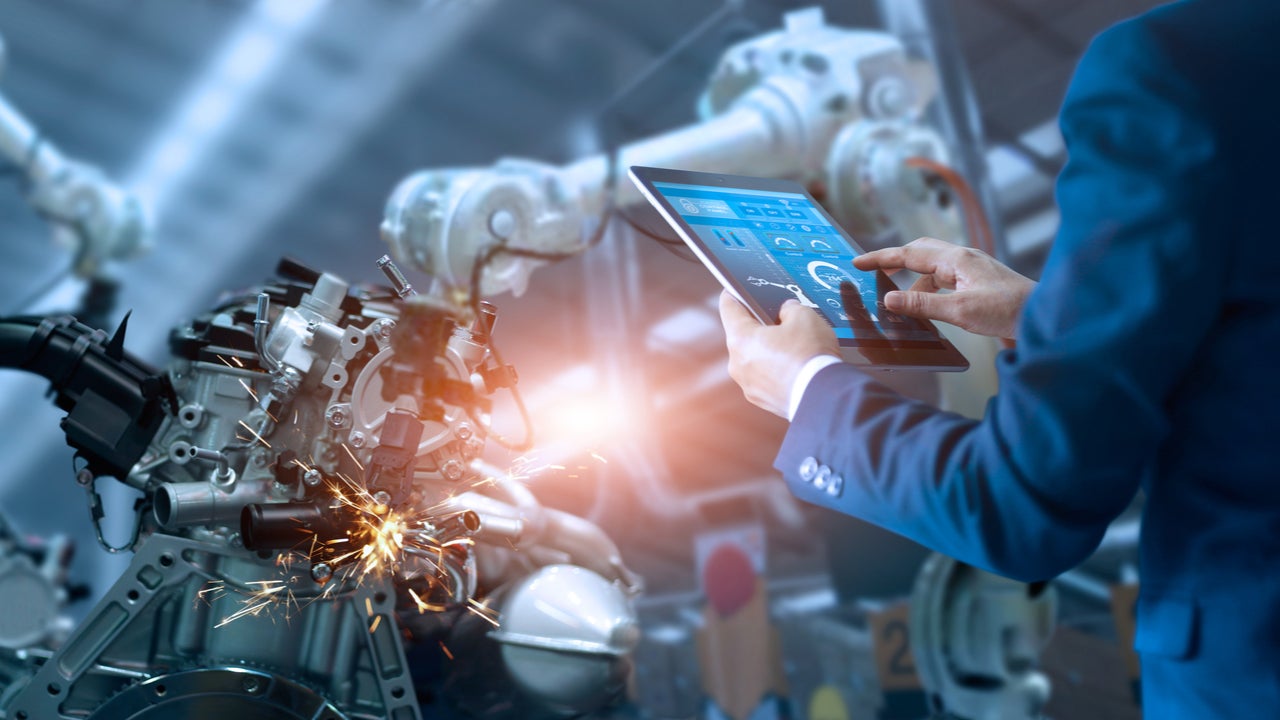As robotics spreads to more industrial and service sectors, one of the most important tasks ahead for policymakers will be to harness the economic benefits that robotics can bring while minimising the negative social impacts.
Listed below are the key macroeconomic trends impacting the robotics theme, as identified by GlobalData.
China
China’s global economic and industrial impact is obvious. Despite being the first country hit by Covid-19, it remained the world’s biggest car manufacturer in 2020. More than 33% of global semiconductor production is consumed by China, as is 38% of the industrial robot market. In addition, it is the world’s largest consumer of key raw materials such as copper, sand for construction, lithium, cobalt, and rare-earth elements.
Under the Made in China 2025 plan, the country aims to be on a par with the US, Japan, and South Korea in such strategic industries as semiconductors, robots, batteries, and supplant them in artificial intelligence (AI). The country has the world’s richest and most scalable data sets for its algorithms to work on and state backing for the R&D efforts of its AI companies, including Baidu, Alibaba, Tencent, and iFlytek.
At root, trade disputes between the US and China are about US (and indeed European and Japanese) objections to the Chinese mercantilist system behind Made in China 2025. There is no chance that President Xi’s regime will dismantle this structure. Therefore, US chip companies that rely on the huge Chinese domestic market for the bulk of their future earnings will have to work within the Chinese system while recognising that their Chinese customers aim to become their competitors.
In robotics, China’s native robot companies are still no match for the likes of Fanuc. However, Midea’s acquisition of Germany’s KUKA gave China control of a leading industrial robot company.
How well do you really know your competitors?
Access the most comprehensive Company Profiles on the market, powered by GlobalData. Save hours of research. Gain competitive edge.

Thank you!
Your download email will arrive shortly
Not ready to buy yet? Download a free sample
We are confident about the unique quality of our Company Profiles. However, we want you to make the most beneficial decision for your business, so we offer a free sample that you can download by submitting the below form
By GlobalDataJapan
Robots already dominate Japan’s factories where its industrial robot makers – FANUC, Kawasaki, and Yaskawa – are world leaders. Japan has the world’s third-highest industrial robot density, after Singapore and South Korea, according to the International Federation of Robotics (IFR).
Increasingly, robots are permeating Japan’s services industry, not least in caring for the elderly. The nation showcased its robotics capabilities at the 2020 Tokyo Olympics, postponed to 2021 due to Covid-19. Japan is also the world’s largest manufacturer of precision mechanical parts for robots, with leading Japanese robotic component manufacturers including Harmonic Drive, Keyence, Nabtesco, Nachi Fujikoshi, Omron, and Nippon Ceramic.
Europe
The European Union (EU) seems to be waking up to the risk of being left behind technologically. Reports emerged in 2021 that the EU Commission is developing a plan to rival China’s Belt and Road Initiative.
Germany leads the rest of Europe in both the production and adoption of robots. Germany’s factories have the highest robot density in Europe. KUKA, the only European player among the leading industrial robots’ companies, is headquartered in Bavaria, one of Germany’s richest and most industrialised states. However, as a region, Europe’s robotics companies struggle to compete with those of Japan and the US. Europe also risks being overtaken by China. Indeed, KUKA has been owned by China’s Midea since 2016.
One factor that might trigger a robotics revolution in Europe is demographics. Just like in Japan and South Korea, Europe’s population is ageing, and some of the most promising robotics startups are emerging in the care robots segment. One example is Kompaï Robotics, a French company that developed a multifunctional robot this year to assist vulnerable people.
The future of work
Robotics is impacting work by both changing production lines and, in some cases, replacing human workers. Robot technologies such as co-bots and logistics robots are coming together to turn factories into advanced engineering labs where assembly line processes and components are constantly analysed, streamlined, and improved. The leaders in this kind of factory of the future are the industrial robot leaders (FANUC, KUKA, ABB, and Yaskawa), in partnership with technology providers like Cisco, Hitachi, Rockwell Automation, Huawei, and Japanese AI start-up Preferred Networks.
Unions, policymakers, and social scientists are increasingly concerned that automation, of which robotics is an important component, will lead to increased unemployment. Each industrial robot can replace several human workers, so these worries do not seem unfounded. In Japan’s care homes, for instance, robots reduce the need for night shift nurses, liberating some workers from working unsociable hours and addressing a staffing shortage in this sector.
According to the IFR, South Korea has the second-highest density of robot workers globally, second only to Singapore and ahead of Japan and Germany. South Korea also had the world’s lowest fertility rate in 2020, with Japan and Germany not far behind. Thus, if automation presents risks to labour, robotics can also help address future shortages in the workforce.
Industry diversification
Robotics remains disproportionally reliant on the automotive industry. According to IFR data published in 2020, 60% of all industrial robots in 2019 were deployed in automotive factories. However, other industries increasingly use robots too. Robotics orders from electronics, machinery, plastic, chemical products, and food processing companies have increased.
This is an edited extract from the Robotics – Thematic Research report produced by GlobalData Thematic Research.









Related Company Profiles
Alibaba Group Holding Ltd
Tencent Holdings Ltd
Hitachi Ltd
Midea Group Co Ltd
ABB Ltd